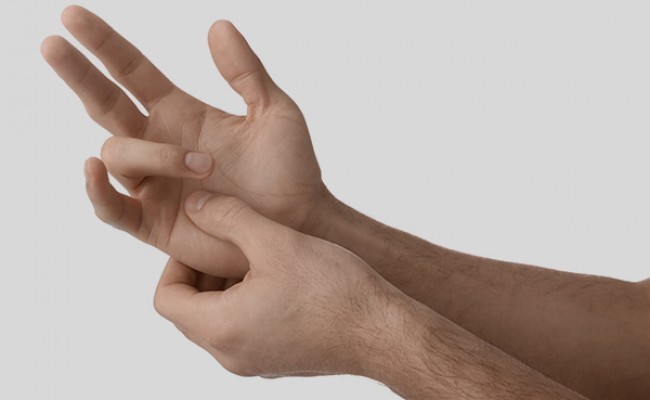
Trigger finger
- 17/01/2023
What is trigger finger?
Trigger finger is a medical condition in which a finger becomes locked or trapped in a bent position and then releases with a characteristic pop or "snap."
The condition can be painful and may affect an individual's ability to move the affected finger. It is most common in people who have jobs that require repetitive hand movements, such as carpenters, mechanics, and musicians, but it can also occur due to other causes, such as diabetes or arthritis.
What causes trigger finger?
It can be caused by inflammation of a tendon in the finger or its stabilizer pulley, preventing the tendon from moving properly.
Certain risk factors may increase the likelihood of developing trigger finger, such as:
- Age: The condition is more common in people over 40.
- Sex: Women are more likely to develop trigger finger than men.
- Jobs that require repetitive movements of the fingers or hands, such as carpentry, mechanics, music, etc.
- Conditions such as diabetes or rheumatoid arthritis.
- Injuries or trauma to the fingers or hands.
- Prolonged use of vibrating tools.
It is important to mention that, in some cases, trigger finger may occur without an apparent cause.
How is trigger finger diagnosed?
The diagnosis of trigger finger is made through a combination of a medical history and a physical examination. The doctor will ask about symptoms, as well as any risk factors that may be present.
During the physical examination, the doctor will move and touch the affected finger to assess mobility and sensation. He or she may ask the patient if there is pain or if the finger locks or gets stuck in a bent position. He or she may also look for signs of inflammation, such as swelling, redness, and warmth in the affected finger.
In some cases, your doctor may order an X-ray or MRI to rule out other conditions, such as a bone injury or tumor, that can cause similar symptoms.
Generally, the diagnosis of trigger finger is clinical and does not require additional testing.
How is trigger finger treated?
There are several treatment options for trigger finger, including:
- Conservative therapy: This type of treatment includes the use of nonsteroidal anti-inflammatory drugs (NSAIDs) to reduce inflammation and pain, as well as stretching and strengthening exercises to improve finger mobility. Resting the affected finger and avoiding activities that cause pain or inflammation are also recommended.
- Corticosteroid injection: If conservative treatment is not effective, your doctor may recommend a corticosteroid injection in the affected finger. Ultrasound guidance is recommended for this injection, as it increases the chances of success. The medication is injected around the inflamed tendon or into its pulley to reduce inflammation and improve finger mobility.(See article on ultrasound-guided injection of trigger finger).
- Surgery: If the above treatments are ineffective, surgery may be recommended to treat trigger finger. The procedure is performed to release the trapped tendon and allow it to move freely in its tendon sheath. The surgery is an outpatient procedure, usually performed under local anesthesia, and the patient can return home the same day.
Make an appointment with Dr. Jordi Jiménez. He will see you in the center of Palma and help you regain your quality of life.

![[VIDEO] Ultrasound-Guided Injection for Trigger Finger](https://drjordijimenez.com/imagen/100/100/Imagenes/infiltracion-ecoguidada-dedo-resorte-drjordijimenez.jpg)
![[VIDEO] Ultrasound-guided infiltration of the lumbar facets](https://drjordijimenez.com/imagen/100/100/imagenes-pagina/sindrome-facetario-lumbar-drjordijimenez (1).jpg)
![[VIDEO] Ultrasound-guided infiltration of the hip joint](https://drjordijimenez.com/imagen/100/100/Imagenes/valgo-dinamico-rodilla-drjordijimenez.jpg)